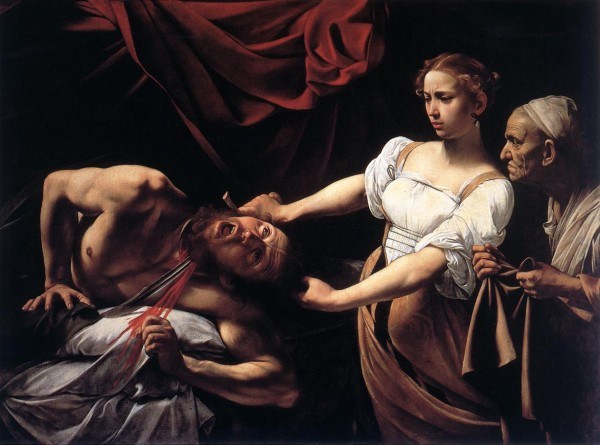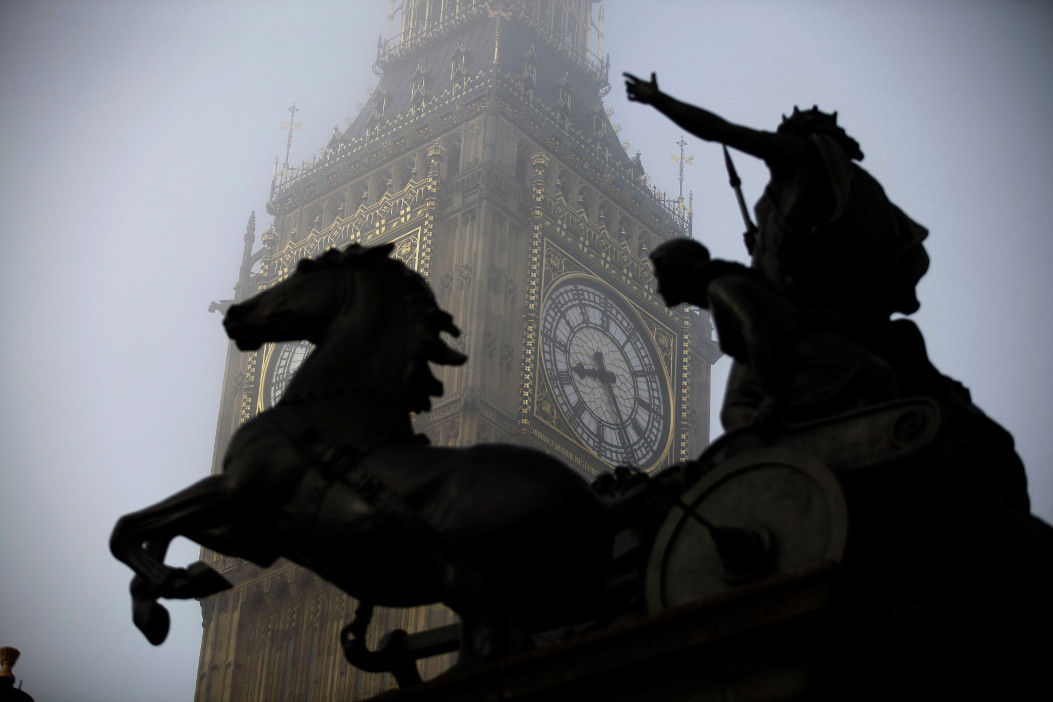Resentment combines hatred and love/desire. Self-hatred and dissatisfaction often leads to imagining that someone else has it better and to resentfully desiring to be that someone. That other person is then viewed as an obstacle to attaining the desired state which is almost always illusory. The Other is imagined as wafting through life, his nose in the air, disdainful of mere plebeians and somehow immune to all the usual dissatisfactions and disappointments that everyone else experiences.
Hatred that begins with self-hatred is projected onto the Other. With feminism, men are imagined to stand in the way of women’s liberation. Every male achievement, past, present and future, is just another slap in the face of women. That is why it is rhetorically useless to give counter-examples to attacks lambasting men as a group.
In the nineteen eighties, feminist Hélène Cixous compiled a list of binary opposites related to the dichotomy between male and female: culture/nature, intellect/emotion, mind/body, order/chaos, language/silence, presence/absence, speech/writing, light/dark, good/evil – which could include abstract/concrete, general/specific, sun/moon. Cixous claimed that the first term in these lists is valued over the second term.

Hélène Cixous
Cixous is right that these opposites exist and she is also probably correct that the first item in these dichotomies is more connected to the male and the second to the female. It is immediately obvious that in most cases, neither can exist without the other, just as the biological difference between men and women is necessary for the continued existence of the species.
She is even probably right that men tend to gravitate to the first term and women to the second. Such a tendency is akin to a déformation professionnelle. Right-thinking men should make an effort to ameliorate this tendency. Positivism, for instance, seems like a particularly male disease and has an air of unapologetic belligerency about it. Everything that is really important is invisible and to that extent is “not there.” Consciousness, emotion, love, morality, value, and nonphysical beauty are immune to technological intervention and measurement. The male technologist is thus impotent in the face of what is important: the sacred; an image it would seem someone like Cixous would relish.
So another male/female dichotomy would be known/mystery. One term is meaningless without the other. To say that one term is better than another is simply a fallacy. Each term makes the other possible. There is no foreground without a background; no meaning without a context.
Abstract thought needs the concrete. It is the concrete from which examples are derived. Good male thinkers take these feminine aspects of reality into account, just as some bad female thinkers wish to reject the masculine aspects as phallogocentrism.
The focus on technology and manipulation, on the known versus the mysterious, seems to be primarily an Enlightenment phenomenon, though Guenon traces its beginnings back to a misunderstanding of Plato. The Catholic Middle Ages had plenty of room for mystery. The triune God Himself is mysterious. Tradition is mysterious because it exists as a result of trial and error, not theory and no one necessarily knows why a traditional practice exists. The past is mysterious because no counterfactual experiments can be performed to test historical hypotheses and the future is also a mystery.

René Guénon
The pursuit of knowledge only exists because of the absence of knowledge – because of the mysterious and one of the things a thinker comes to know is the existence of mystery. The solution is not to overcome these dichotomies but to recognize the value of both.
Feminism is a mistake because it demonizes the passive, the receptive, the absent, the natural, the sought. In an instance of “the grass is always greener,” it imagines that the masculine is better – which is simply to make the same mistake some male intellectuals make – and then produces resentful women.
Misogyny is primarily a female invention perpetrated by women. Feminists despise the homemaker, the housewife, the person who makes the career of someone else possible and all the accoutrements of femininity – skirts, makeup, painted nails, modesty, delicacy. Heterosexual men have no reason to despise such things. Generally speaking, practices that emphasize sexual difference and characteristics produce a positive reaction in the opposite sex. This can be readily witnessed on the superficial level: broad shoulders and a “tight bum” for men versus “curves” for women.
In order to live with the opposite sex, it is necessary to make compromises and to take a step in his or her direction. Everyone embodies some masculine and feminine characteristics with males tending to exemplify the former and females the latter. Each sex is somewhat exotic for the other and represents the unknown; bearing in mind that each person tends to be somewhat unknown both to himself and to others, so some of the struggle lies just in understanding another person.
Feminists have demonized men as the oppressors of women and along with it the masculine; manliness. They have rejected the feminine as unworthy and something to be shunned. So the feminine woman is also vilified. The masculine man is hated. The feminine man is likewise hardly worshipped. Only masculine women are worthy of approval – but then they exemplify everything hated in men – so misogyny exists only in conjunction with misandry. Perhaps it is in unconscious recognition of this abhorrent nihilism that so many liberals want a post-gender utopia.

Claude Lorrain – Ulysses Returning Chryseis to her Father (1644)
Historically, it is true that Greek Classical culture, 6th and 5th century B.C., was a surveillance culture for women which reduced women to the level of women in many modern Muslim countries. But women prior to this period were not similarly restricted. The Iliad and Odyssey, stories concerning pre-Classical times, are filled with strong, sympathetic, dynamic women. They are definitely women; not men in drag. These female characters are portrayed as important, three-dimensional human beings who love, fear, hate, beg, chastise and argue. Helen is perhaps a bit of a cypher, but Iphigenia, Hecuba, Clytemnestra, Cassandra are not. Their sex is not despised and they are taken completely seriously by the male protagonists. Penelope is one of the most important characters in the Odyssey and is no fainting violet. Likewise, Medea, Electra, Phaedra and others in Greek Tragedy are not hated or despised as women, although some of them suffer from the failings of many human beings and are positively scary.
Women in Roman culture were historically important. Viking women were nearly as intimidating as their male counterparts, similar, perhaps to Klingon women in Star Trek. The cult of the Virgin Mary is pro-woman. In truth, the Middle Ages were more pro-women than the present; certainly more pro-feminine. Dante’s Beatrice in The Divine Comedy is loved and respected. In fact, she is superior to Virgil as Dante’s guide ushering Dante to paradise. Shakespeare’s women are fully fledged people. They suffer from the same moral deficiencies and virtues as the men and they are taken completely seriously.
Before modern science’s obsession with prediction and control, the feminine aspects of reality were valued more. By focusing on the known, in order to manipulate it, the mysterious is denigrated. The idea that the universe is a machine seems like a hyper-masculine perversion. The universe as an organism, the prevalent view in the Middle Ages; as something growing, moist, ensouled and alive, smacks of the feminine. The fact of female pregnancy gives women a special relationship with the organic and alive.
Being deficient in emotional intelligence is more typically male. A quick Google search indicates that autistic boys outnumber autistic girls, 4:1. A male professor I know does not believe life exists because “life” is a poorly defined concept and according to him, every time someone attempts to define life, he is unable to exclude factors that machines cannot also duplicate. Likewise, in a recent B.B.C. podcast documentary, the man and woman robot experts who were interviewed still think that the existence of consciousness in dogs is an open question; a view only possible among the emotionally and intuitively stunted or the mentally retarded. The woman, however, was specifically interested in making a robot who could deal with emotions; as frighteningly misguided as that is.

“Sappho” of Pompeii
Feminists are right to be alarmed about a hypermasculine fixation on the known, definite and abstract in the name of prediction and control. I too find such things repugnant. But it is an insane reaction to this to end up rejecting both the masculine and feminine aspects of reality. If feminists wanted to say, “we women embody and exemplify more readily than you men, those characteristics that have been downplayed and rejected by scientism,” then they would be correct.
Perhaps feminists recognize that S.T.E.M. (science, technology, engineering and math) subjects are the most economically valuable with higher rates of remuneration and want to get in on the action. If emotional sensitivity, intimacy, openness to mystery, a fine attunement to the concrete, an emphasis on context rather than formalism – if these things were the route to success and glory as perhaps was more the case in the Middle Ages – then perhaps feminists could bring themselves to value the feminine once again and to celebrate women’s greater abilities in these areas.
As it is, the more typically feminine value of compassion is destroying society. Thanks to feminism, masculinity has largely withdrawn from the cultural scene. Despite the feminist rejection of femininity, there is a de facto hegemony of the feminine in education, the mainstream media and the ruling elites. Reality will not be denied. Power-seeking women use what they have available to them and the feminine emphasis on compassion and motherliness becomes a weapon. Pretended compassion for supposed victims becomes Zeus’ lightning bolt with which to strike the opponent; the new scapegoating that poses as anti-scapegoating. Proof that the compassion is a mere pretence can be seen in its selectivity. For instance, in a recent hiring search that I know of, the search committee was given a list of approved races fit to jump the queue – the rest were to be as thoroughly ostracized as white men. The rejection of Christianity with its revelation of the scapegoat mechanism embodied in the Passion of Christ also contributes to the rise of scapegoating.
An excess of compassion leads to a medal for showing up, lowering academic standards, political correctness, a desire to avoid hurt feelings, “equality,” and a rejection of truth when it conflicts with any of these things.
The situation is one of misandry and feminine self-hatred. Accusations of misogyny just increase in number. The word “misogyny” is now being used by many instead of “sexism,” contributing to the proliferation. Any suggestion of dimorphism and thus an acknowledgement of reality now can be stigmatized as the hatred of women. The projection of the hatred of women onto men will not cease until women stop hating themselves.
 Adj. Prof. Richard Cocks teaches philosophy at SUNY Oswego. Originally from Christchurch, New Zealand, he is presently based in the United States. Dr. Cocks is an editor and regular contributor at the Orthosphere and has been published at The Brussels Journal, People of Shambhala, The John William Pope Center for Higher Educational Policy and the University Bookman.
Adj. Prof. Richard Cocks teaches philosophy at SUNY Oswego. Originally from Christchurch, New Zealand, he is presently based in the United States. Dr. Cocks is an editor and regular contributor at the Orthosphere and has been published at The Brussels Journal, People of Shambhala, The John William Pope Center for Higher Educational Policy and the University Bookman.





You raise some very interesting and valid points. Are you familiar with the Aristasians? They were a group of women at Oxford who, starting in the mid-70s, articulated a critique of modern feminism very similar to yours—asserting that it disdained femininity and, in doing so, had become a leveling instrument of unbalanced masculinization. They differed from your approach, however, in combining the social critiques of Guénon and Coomaraswamy with comparative mythological analysis of the phenomenon of solarization (the process whereby formerly feminine-associated symbols, such as the sun, became masculine-associated in the late bronze age) to argue that femininity understood in its full breadth (something closer to the medieval concept you mention, rather than the more limited femininity stereotyped by the modern West) was essentially aligned to the divine and cosmic natures, and that the development of masculinity is part and parcel of the process of Iron Age inversion.
I doubt you would be swayed to their point of view, but I think you would find them an intellectually worthy and philosophically credible counterpoint for your interest. The best introduction to them is certainly Miss Alice Lucy Trent’s magnum opus, “The Feminine Universe”.
That’s fascinating racemochridhe. Thank you for bringing this to my attention. I’ll take a look at that book. From my POV, solarization wouldn’t worry me too much, since the moon and the Earth remained feminine in the popular imagination. I do think that it is very important that the masculine and feminine aspects of the universe and people are balanced and that neither one becomes too dominant even as metaphors. When men were demonized as the oppressors of women and as rapists and pedophiles in the 1990s such that children were no longer allowed to walk to school or play outdoors unsupervised in New Zealand, the US, and probably other places, that left women holding the fort. As a result, despite the propaganda against the feminine, feminine compassion became exaggerated in the education system and elsewhere leading to no child left behind and a general falling of standards so that now about 40% of New Zealanders go to university instead of 5%. Anyone who has taught in such a situation (me!) knows exactly what that entails. The opposite tendency is what Ken Wilber calls “Eros” which is more a tough love tendency. Ancient Sparta would be an example of this masculine impulse becoming exaggerated. Of course, individual men and women can embody both Agape and Eros and thus both feminine and masculine tendencies, but men and women as groups will tend more in one direction than the other.
Mr. Cocks,
Thank you for a very thoughtful reply. I, too, work as teacher, and have occasion to lament the decline you describe nearly every day. I hesitate to ascribe it to an excess of agape, however, especially in connection with the tendencies of the fairer sex, for three reasons. First, I note that (at least in the United States, where I live) the majority of those in the teaching profession below university level have always been women, including during those periods when the system was relatively functional. Second, I note that the most recently surviving example of the more eros-driven “tough love” education you mention was that provided by nuns in Catholic schools, the memory of whom causes so many, including my father, to feel a pronounced throbbing in their knuckles to this day. Third, it seems to me that the system was already in inexorable decline well before the pernicious cultural shift you describe, with the education even of the 1950s, for example, being but a pale shadow of that afforded in the 19th century.
The notion of balance you describe interests me greatly. In speaking of the fourfold social order, we would certainly recognize a need for harmony between the various castes or estates, but would not, I think, typically conceive of this as a balance in which none should be too dominant. It is part and parcel of a harmonious order, in that case, that the brahminical caste should be dominant, and demands for a more “balanced” status from the kshatriya are the beginnings of a decline (as happened most notably in the West during the Reformation). Likewise for the vaisyas in respect of the kshatriya (one thinks, in the West, of the Atlantic revolutions), or the shudras in respect of the vaisyas (as occurs in the “dictatorship of the proletariat). The Aristasians, whom I have mentioned, took the interpretation that the raising of the masculine principle first to an equal, and then ultimately to a superior, social status represents precisely this kind of upending of the natural order.